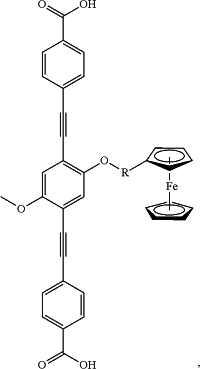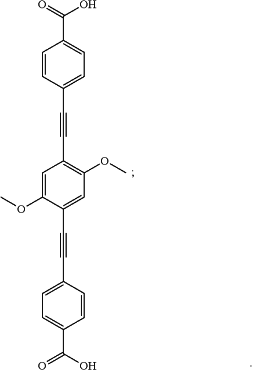| CPC C07F 17/02 (2013.01) [C25B 11/048 (2021.01)] | 3 Claims |

|
1. A method for producing a metal-organic framework (MOF) having a desired redox conductivity and comprising redox-active linkers, each having ω-alkyl-ferrocene groups, the method comprising:
combining, in a solvent comprising ZrOCl2, one or more redox-active linkers and one or more redox-inactive linkers in a ratio sufficient to provide the MOF with the desired redox conductivity,
wherein at least one of the one or more redox-active linkers comprise the following formula:
 R being a C1 to C24 alkyl;
wherein at least one of the one or more redox-inactive linkers comprise the following formula:
 and
wherein the produced MOF comprises the following formula:
Zr6O4(OH)4[FcxNR1-x]6;
wherein Fc represents the plurality of redox-active linkers,
wherein NR represents the one or more redox-inactive linkers, and
wherein x is from 2 to 100.
|